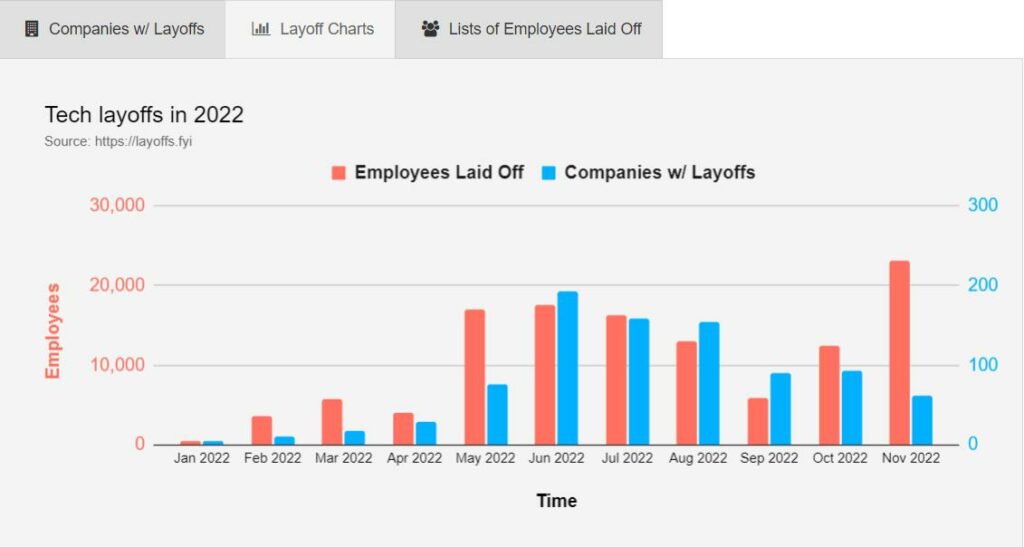This Website Tracks Layoffs In Tech: The Numbers Will Surprise You
Layoffs in Tech have been widespread post-pandemic, and the primary reason for the same is firms trying to recover from huge losses due to the sudden impact of COVID-19. You may have heard about companies laying off their employees a gazillion times in the news, but you’d be surprised to know the exact number of employees in Tech that have been laid off.
Thanks to a website, you can now track the companies and the number of employees that they’ve laid off. It gives you a detailed view of the company and the number of people that it has laid off. The best part is the website uses an Airtable embed so that you can sort as per the country, job, and date, plus use filters to get the results you desire.
Track Tech layoffs using this website

The website is called Layoffs.fyi, which shows that over 1300 companies have laid off over 200 thousand employees post-pandemic. The website also suggests that over 100k people were laid off in 2022 itself, which is a crazy number if you think about it.
The Airtable embed shows the name of the company, location (if it’s US or non-US-based), number of people laid off, date, percentage of employees laid off, and source to ensure the information is authentic. It also shows you the industry of the companies and the amount of money raised, which totals $499,088.
The website also shows you the data in charts for a better understanding, and according to the same, over 200 companies laid off over 20,000 employees in November this year. The same number extrapolates to 60,000 employees in over 400 companies in Q2 2020.

In the List of Employees laid off section, you can click on Google Docs to see the details of every employee that was laid off, including their names, job titles, areas of expertise, LinkedIn profiles, and regions.
For example, here’s a list of people laid off from Twitter and Meta following the Elon Musk-Twitter fiasco, and Meta’s declining growth, respectively.






